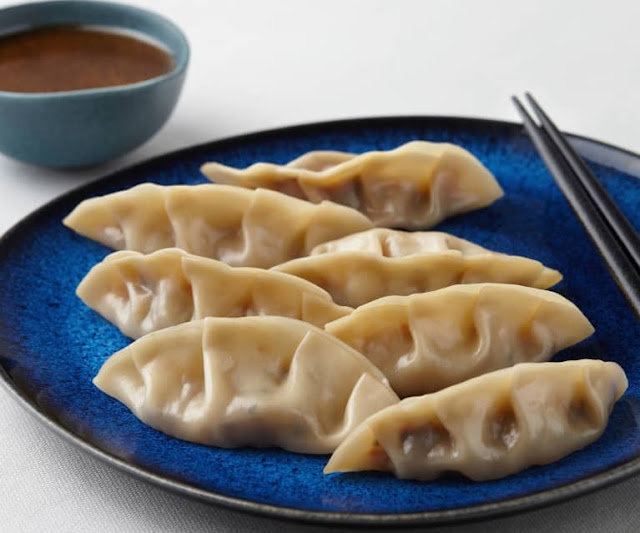Ingredients
- 80-100g/2.8-3.5oz fresh egg noodles (note 1)
- 400ml/13.5oz Home-made Ramen Broth (boiling hot, note 2)
- 2½ tbsp Miso Flavouring Base
- 1 tbsp sake
- ½ tbsp mirin
- ½ tbsp soy sauce
- 120g/4.2oz miso (brown)
- ½ tbsp sugar
- ½ tbsp ground white sesame seeds
- 1 tsp garlic , grated
- ½ tsp ginger , grated
- ½ tsp chilli bean paste (note 3)
- 1 tbsp oil
- 1 tsp ginger finely chopped
- 80g/2.8oz pork mince
- 3 tbsp shallots/scallions , finely chopped
- 1½ cups bean sprouts
- 1 tsp Miso Flavouring Base diluted in 2 tsp water
- ½ tsp soy sauce
- 2 slices Yakibuta (Braised Pork)
- 1 ½ tbsp dried wakame seaweed pieces , rehydrated
- 5 strips of menma (seasoned bamboo shoots, note 4)
- 3 tbsp sweet corn kernels (boiled fresh corn, canned or frozen - defrosted)
- 2 tbsp finely julienned shallots/scallions , curled in iced water
Place a small saucepan with sake and mirin in it over low heat.
When it starts boiling, add the remaining Miso Flavouring Base ingredients and mix well. The miso mixture becomes pasty and when small bubbles start appearing, turn the heat off.
If you are not in a hurry, transfer the miso paste to an air-tight container and store in the fridge overnight before using to allow development of good flavour.
Place 2½ tablespoons of Miso Flavouring Base in a serving bowl.
Boil water in a saucepan and cook noodles as per the instructions and drain.
- While boiling the water in the saucepan, heat a frying pan with oil in it over medium high heat.
Add ginger and pork mince and cook for 1 to 1½ minutes, breaking the mince but keeping some larger chunks.
When the mince is cooked through, add ⅔ of copped shallots, bean sprouts and stir-fry for 30 seconds.
- Add the miso flavouring and soy sauce and stir for another 30 seconds. Turn the heat off.
Add a small amount of Ramen Broth to the bowl with miso, mix and dilute the miso base.
Add the remaining Ramen Broth keeping about 50ml and taste test. Adjust the saltiness with remaining Ramen Broth.
Add the noodles topped with the bean sprouts stir-fry. Sprinkle the remaining chopped shallots over and serve immediately.
- Place 2½ tablespoons of Miso Flavouring Base in a serving bowl.
Boil water in a sauce pan and cook noodles as per the instructions and drain.
Add a small amount of Ramen Broth to the bowl with miso, mix and dilute the miso base.
Add the remaining Ramen Broth keeping about 50ml and taste test. Adjust the saltiness with remaining Ramen Broth.
Add the noodles. Place Yakibuta slices, menma strips, wakame seaweed and sweet corn, topped with julienned shallots, in the middle.
1. Time to cook noodles varies depending on the type of noodles as well as your preference. Follow the instructions on the pack as a guideline.
2. Please visit my post, Home-made Ramen Broth Recipe.
3. Chilli bean paste is called doubanjiang or toban-djan (豆板醤). You can buy a bottle of doubanjian at Asian grocery stores.
4. Menma is fermented and seasoned bamboo shoots strips. See the photo below.
Menma is a must-have topping of the simple ramen which consists of just a couple of slices of pork and shopped shallots/scallions.
They are sold either in a glass bottle or in a vacuumed plastic bag. You can buy menma at Japanese/some Asian stores.
5. Miso flavouring base can be kept in the fridge for a week or so. It can also be frozen.













